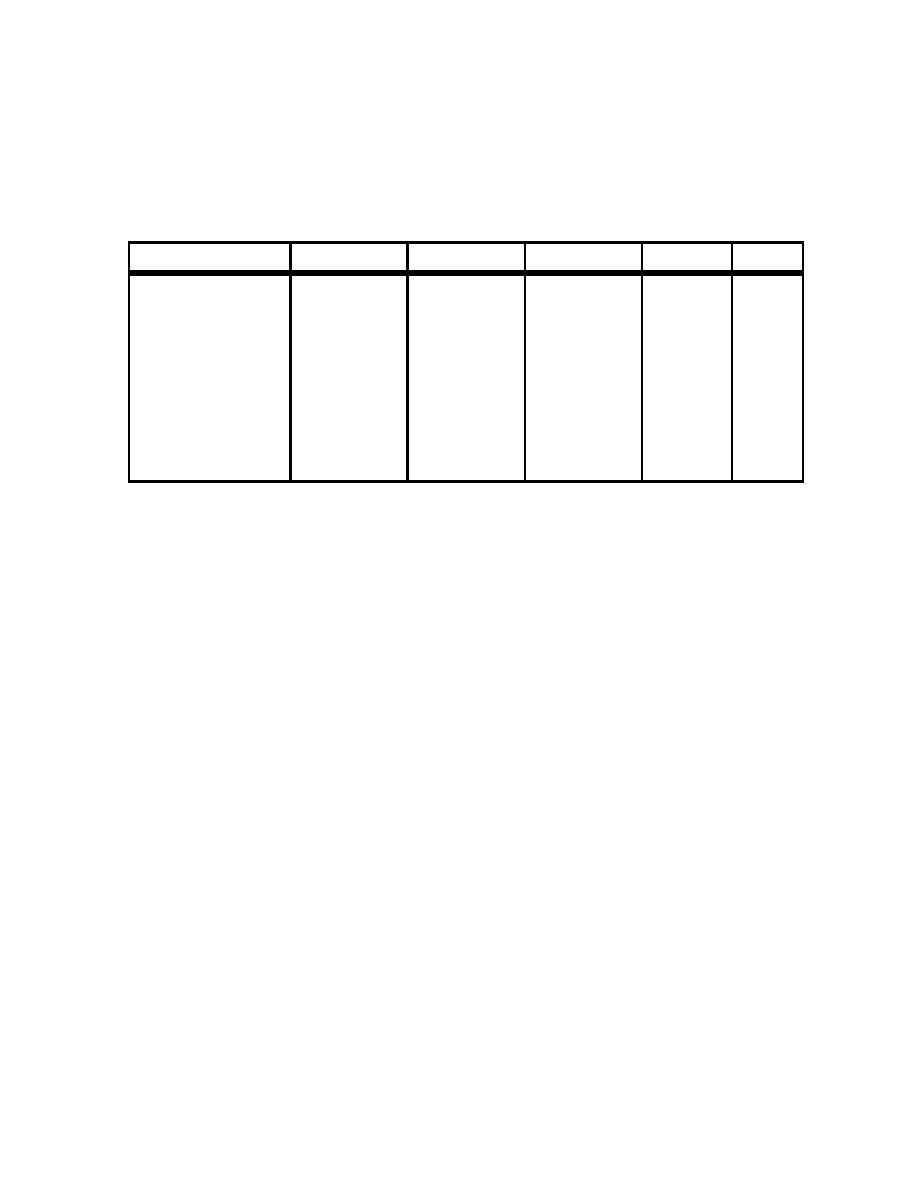 |
|||
|
|
|||
|
Page Title:
Table 4-15. Measured ARFs and RFs from the Impact of Structural Debris on Powders |
|
||
| ||||||||||
|
|  DOE-HDBK-3010-94
4.0 Solids; Powders
Table 4-15. Measured ARFs and RFs from the Impact of Structural Debris on Powders
(Table 1 - Langer, November 1987)
Material
Configuration
<10 m AED
>10 m AED
ARF
RF
Sand, <2000 m
qt. can
2.5E-6
2.6E-4
2.6E-4
0.01
Sand, <500 m
qt. can
2.0E-5
2.8E-4
3.0E-4
0.07
1.8% <25 m
Sand, <500 m
on pad
3.1E-4
5.6E-4
8.7E-4
0.36
1.8% <25 m
Sand, <500 m
on pad
7.2E-5
4.3E-4
5.0E-4
0.14
plus 2.6% Al2O3
Al2O3 <300 m
on pad
3.3E-4
8.9E-4
1.2E-3
0.27
24% <25 m
Nickel
on pad
1.0E-4
7.5E-5
1.8E-4
0.57
0.2% <25 m
measured. The median ARF and RF for all materials were 4E-4 and 0.2 with average values
of 6E-4 and 0.2. The range of ARFs is a factor of 5, from 2E-4 to 1E-3. Without multiple
measurements under the same test conditions, it is difficult to estimate a level of uncertainty.
The limited range of test conditions and the difficulty in reproducing the test conditions
described introduce considerable uncertainty. The analytical measurement instruments used,
however, are not a source of high uncertainty. Other measurements under similar
circumstances at this level of ARF resulted in an order of magnitude uncertainty in the
values. This level of uncertainty appears appropriate for these values.
There are only single experiments on each material and configuration. It is assuring that the
ARF for nickel metal powder, which has approximately the same density as PuO2 and a finer
distribution of particles like PuO2, is less than the ARFs measured for sand. As would be
expected, the ARF for Al2O3, a low density fine powder, is high. Accordingly, the data do
not appear to involve unforeseen response characteristics that would make the limited data
set essentially indeterminate.
The size and weight of the debris used and the fall heights appear to bound a number of
phenomena in nonreactor nuclear facilities, including seismic vibration and impacts on large
confinement structures such as gloveboxes. However, the size and weight of debris and the
fall heights also appear to be unrealistically low for severe conditions in facilities such as a
large building collapse, where large-sized debris from multiple levels may impact the
released materials. In as much as the release mechanism appears to be air turbulence and shock-
vibration, factors that can potentially increase with mass and size of debris and fall height.
On the other hand, as the debris size increases, the impact effect is less likely to be fully
concentrated in one area, and debris will provide cover for material that could limit releases.
Page 4-86
|
|
Privacy Statement - Press Release - Copyright Information. - Contact Us |